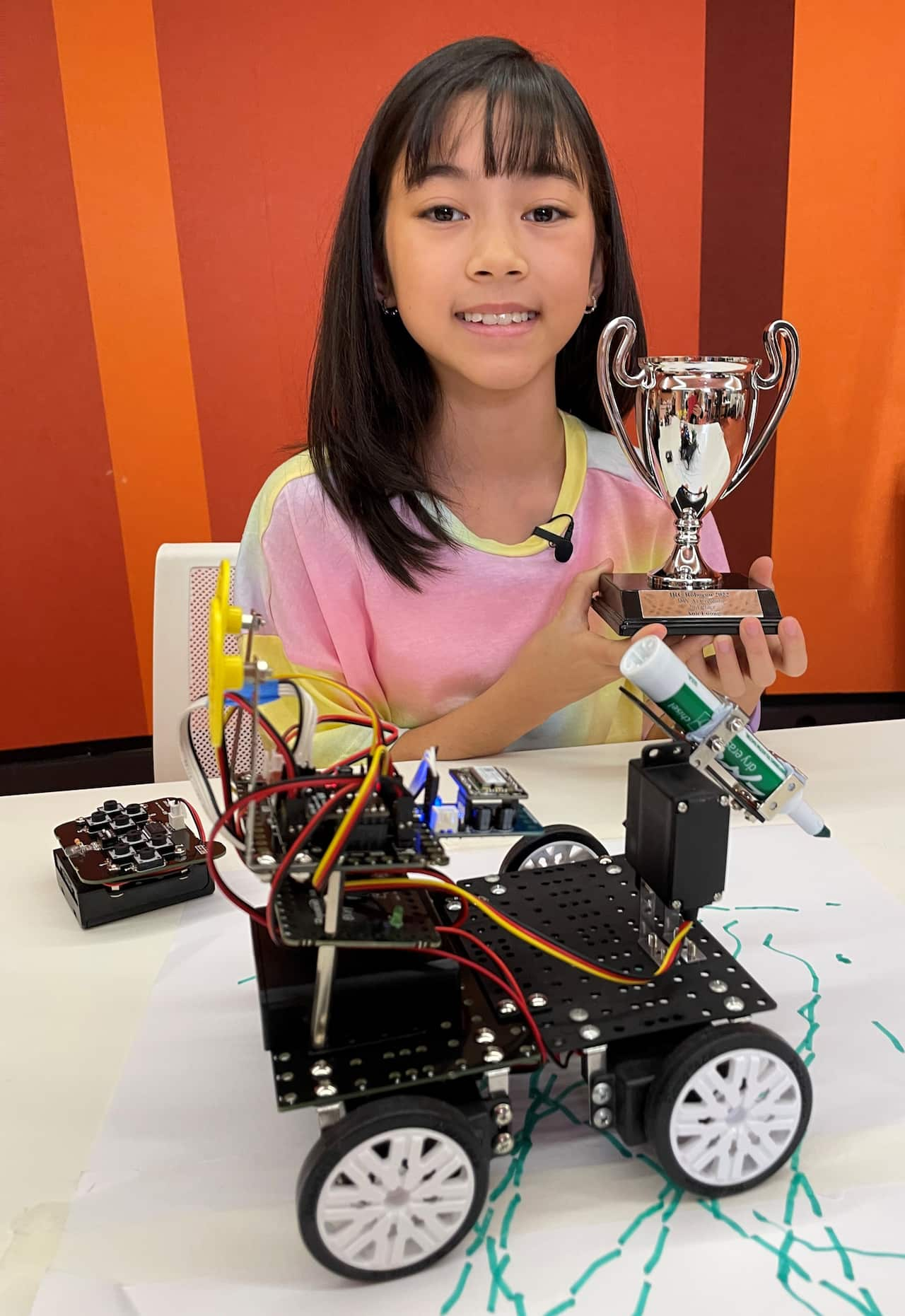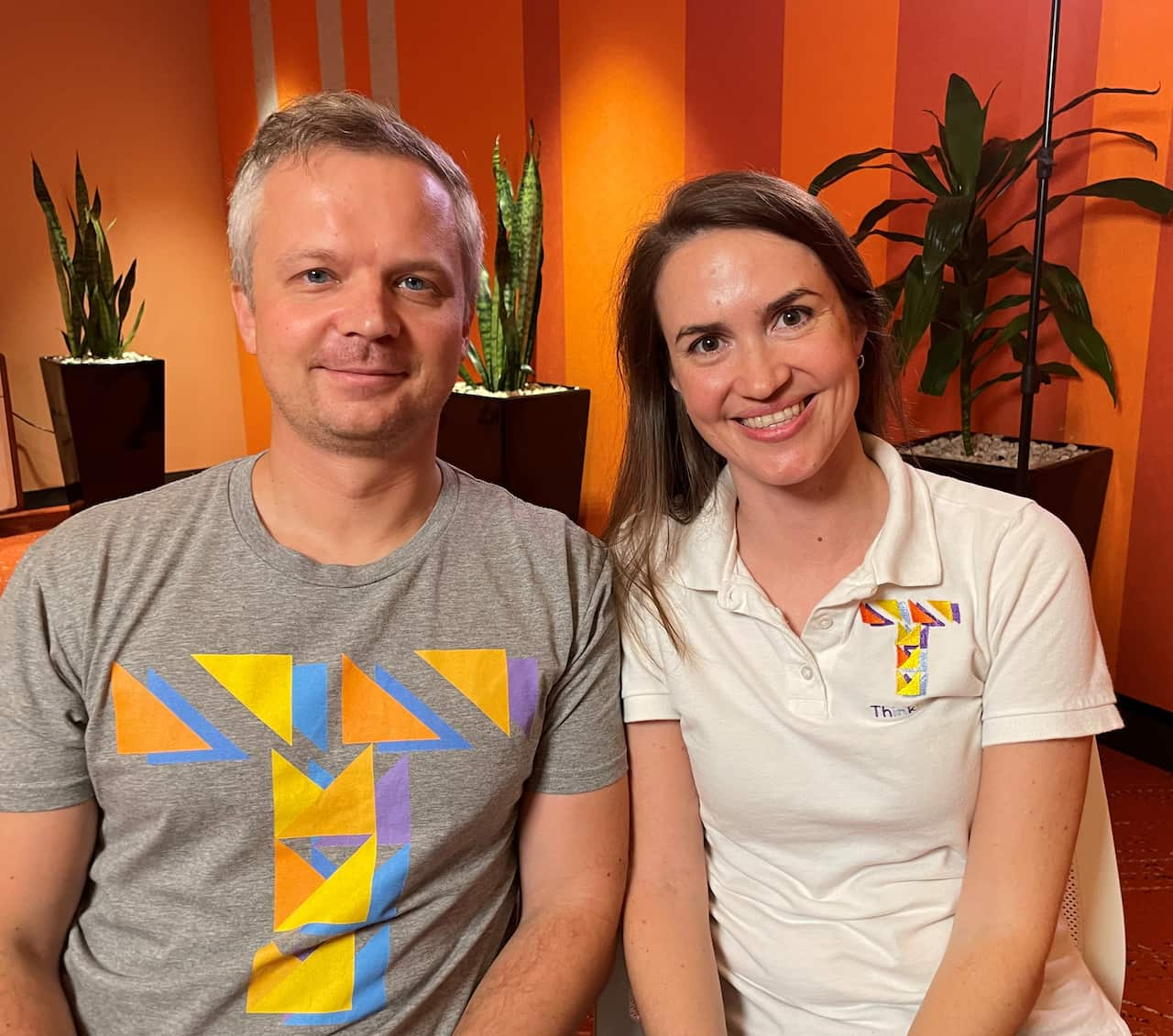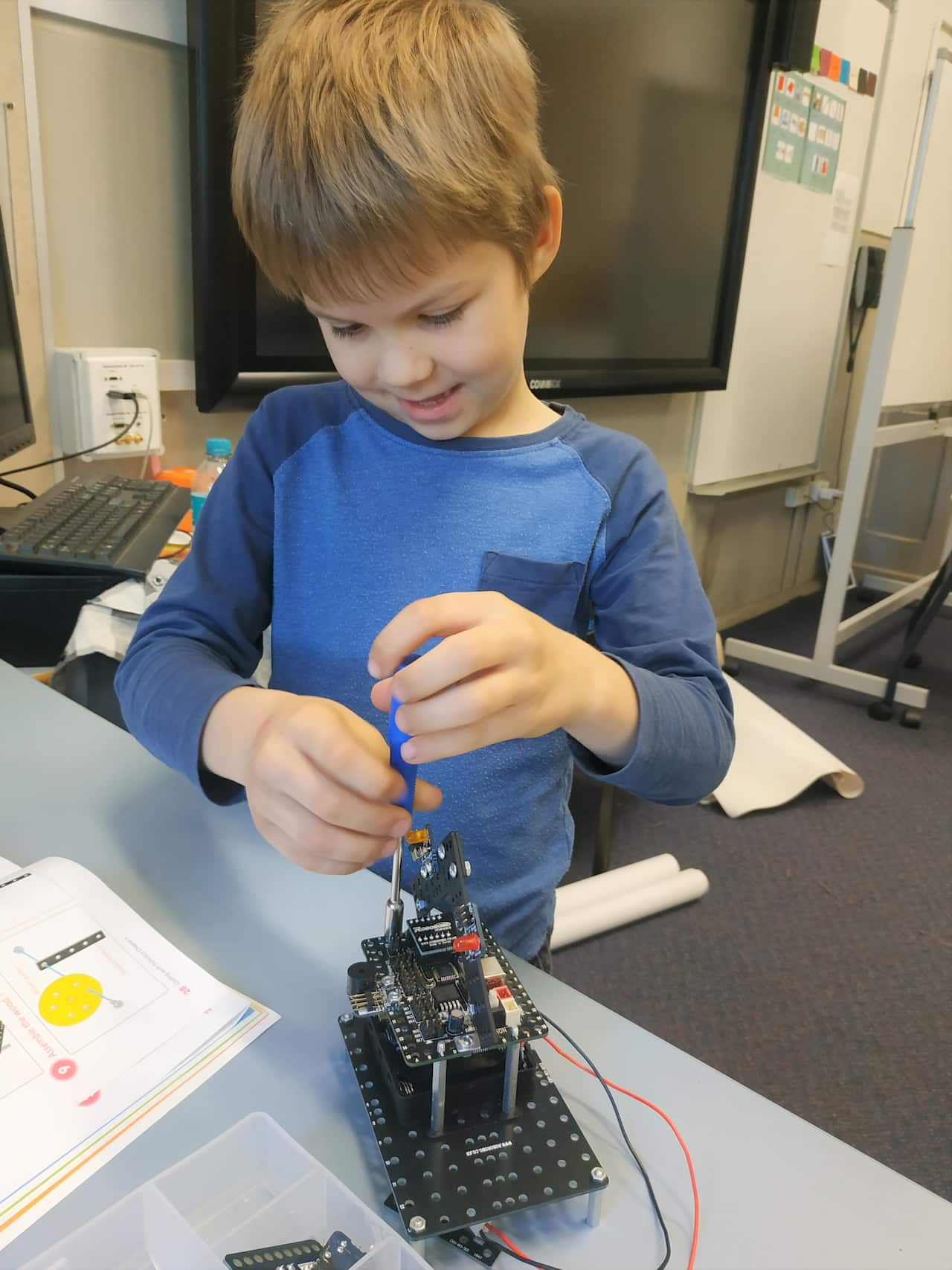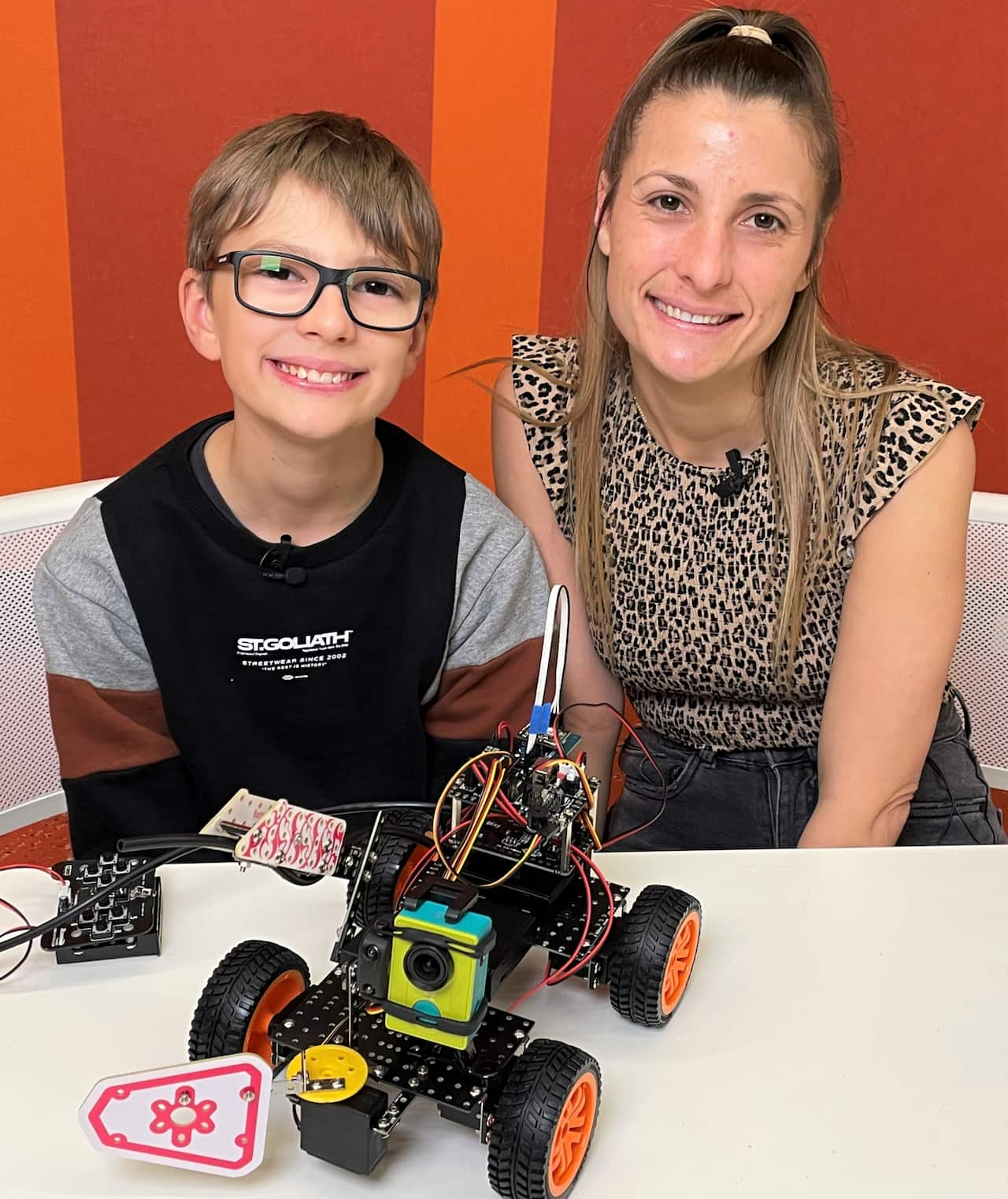Anh Luong is a 10-year-old with a big ambition. She wants to be an inventor when she grows up, and is already well on the way.
“I designed this ‘art bot’ for people living with a disability so they could draw using the robot,” she says with a big smile, as her remote-controlled device makes coloured markings on a large sheet of paper.
“If someone has lost their dominant hand, they could control the robot with their non-dominant hand.”
Anh’s invention recently won second prize at an international robot competition in Korea, in the ‘Do It Yourself Artificial Intelligence’ category.

Anh Luong with her 'art bot' and trophy. Source: SBS News / Sandra Fulloon
“It can produce different patterns, like a circle, a half circle, a zigzag, tracing lines, and using the remote control you can move the pen up or down.”
Anh’s mum Jenny Tran, who migrated to Australia from Vietnam before Anh was born, couldn’t be more proud of her daughter’s achievements.
“I am really, really excited for Anh, because she put a lot of effort into this robot and it's quite a big project for her young age,” she says.
“I hope designing robots is something that can develop further for her.”
However, Anh is among only 33 female students of the 100 enrolled each term at a Sydney robotics school, founded by Andrei and Mila Loginovski.

Robotics educators Andrei and Mila Loginovski. Source: SBS News / Sandra Fulloon
“So we try to educate parents that it's for everyone. We all need to be aware of robotics, both robot programming and technology.”
And it’s not just young girls lagging in robotics education. The number of women enrolling in higher education STEM (science, technology, engineering and maths) courses remains low too.
The federal government's STEM Equity Monitor collects data on women and girls studying STEM courses. The 2022 Monitor found just 36 per cent of applications to university STEM courses and 16 per cent of enrolments in vocational STEM courses are from women.
And women make up only 27 per cent of the workforce across all STEM industries, a 1 per cent fall from 2020.

Mila Loginovski teaching robotics in Sydney. Source: Supplied / Thinklum Robotics School
They opened a robotics school in 2017, and now teach coding and programming to primary students at several sites in Sydney, with plans to expand Australia-wide.
“Understanding robotics is essential. We are surrounded by robots, and there will be more robots in future. So, we need to learn how to work with robots, repair robots and program robots,” Ms Loginovski says.

Robotics education can have learning benefits for children. Source: Supplied / Thinklum Coding and Robotics School
“Robot education or robot programming is really related to 21st century skills, such as creative thinking, computational thinking, problem solving skills,” says Yang Weipeng, an Assistant Professor in the department of Early Childhood Education, at the Education University of Hong Kong.
Mr Yang is examining the benefits of robotics education at 13 kindergartens in Hong Kong, and recently published the results of an earlier study, of 101 children aged between four and six in Beijing.
“We want children to learn computational thinking in their early years. And it is not just about a specific skill like how to code, how to program, but really how to think.”

Harrison Ractivand, 12, with his 'firefighter' prototype. Source: SBS News / Sandra Fulloon
“This robot is designed to save the lives of firefighters,” he says while demonstrating the wheeled model, fitted with a water hose, light and camera.
“From a smart device, the person controlling it may be able to see through the camera. The purpose is so that the firefighters don't need to go in the building if it might be dangerous.”
Impressed by its life saving potential, a panel of international judges in Korea awarded Harrison’s ‘firefighter bot’ first prize at the 2022 International Robot Competition, against multiple entries from Australia, Europe and Asia.
“I felt very proud, because I didn't think it would win, although this definitely is my best creation,” he says.

Harrison Ractivand and his mum, Nicole. Source: SBS News / Sandra Fulloon
“I am a primary school teacher, and I can see that robotics is the future. A lot of jobs will involve coding, being able to use computers confidently in information technology. And robotics involves all of those things.”
Harrison started high school this year and hopes to one day apply his knowledge to space exploration, designing rovers to collect soil samples on Mars.
“I would like to study space and beyond. I am fascinated by robots and believe they will be a huge help when we expand our space industry.”
And there are other applications too. Mr Loginovski says there is a growing demand for labour-saving robots that allow people more time to be creative.
“At home, we have a vacuum cleaner robot that helps to clean our house, and we have a robot that washes the windows,” he says.
“Artificial intelligence is also helping farmers to use soil and their water efficiently.
“And robots can be designed to work in warehouses, in heavy lifting roles where people might get injured.”
The Loginovskis would like to take their robotics educational program on tour, into remote and rural communities.
“We want to give the opportunity to all young minds in Australia to try robotics, including those living in rural areas. It is something they don't always have easy access to.”
Anh Luong says robotics feature in her future plans too.
“When I grow up I want to be an inventor, which will probably include robotics, science and maths.
And she is already thinking about her next creation.
“If I were to make a more intelligent robot, I'd probably program it to use brainwaves. I've always loved the idea of controlling something using your brain, like moving a robot forward just with a click of your fingers.”



